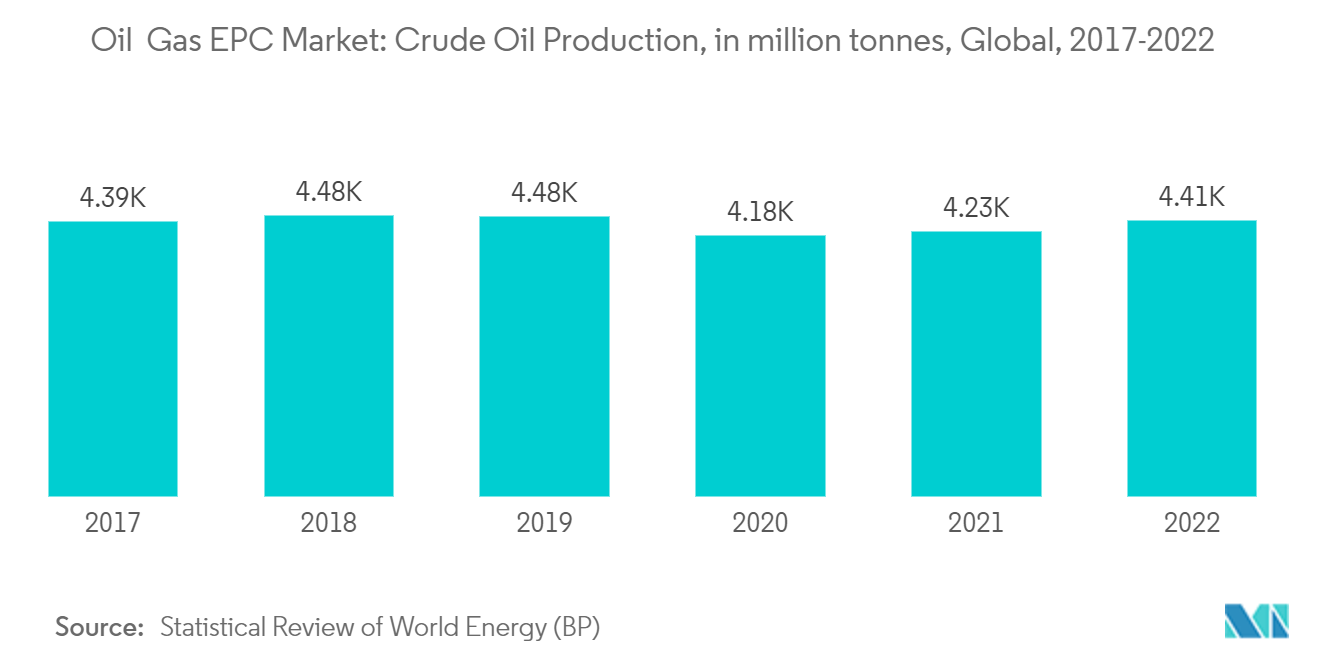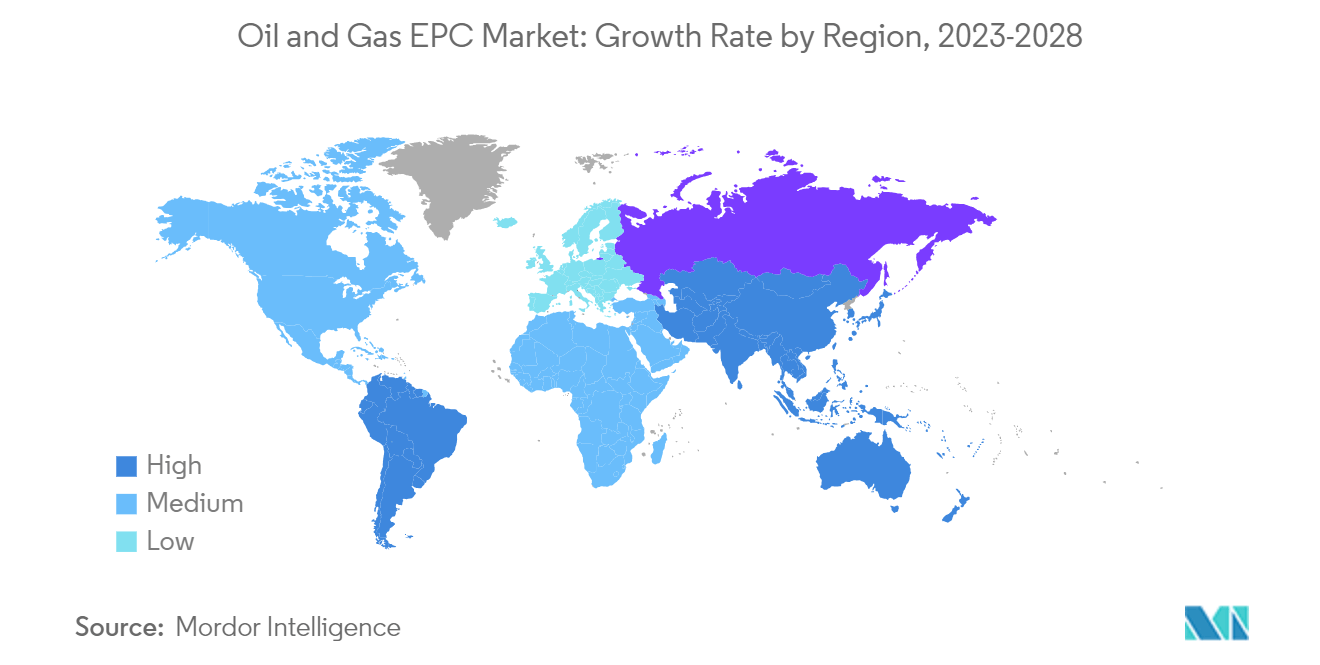Market Trends of Oil & Gas EPC Industry
Upstream Segment Expected to Dominate the Market
- The EPC in the upstream oil and gas sector includes onshore and offshore exploration and production-related services. Traditionally, the total investments in onshore EPC are more than that of the offshore segment, mainly due to lower investment requirements, lesser complexity, more accessible sites, and lower risk than the offshore segment. However, investment in the offshore segment has risen during the last decade due to maturing onshore fields.
- The EPC services for offshore, such as installations, including design, fabrication, installation, commissioning, and start-up of a fixed platform, floating production storage and offloading (FPSO) units, and floating production facilities for shallow, deep water, and ultradeep waters, are gaining traction.
- Concerning the EPC for offshore structures, identifying and assessing development options for offshore facilities, whether based on fixed or floating structures, is crucial. The EPC services for fixed platforms used for shallow waters include constructing and deploying jackets, tripods, integrated topsides, compression platforms, etc., to ensure that fixed platforms are stable and resilient to wind and water movements. The floating platform services, generally for deepwater, include constructing and deploying hulls and decks for semi-submersible platforms, modules and turrets for FPSOs, and mooring systems and buoys.
- Floating platforms generally eliminate the need for laying expensive long-distance pipelines from the production facility to an onshore terminal. Floating platforms are also economical in smaller oil fields, where the expense of installing a fixed oil platform and pipeline is too high. Once the field is depleted, FPSOs may be moved and used at a new location instead of decommissioning a fixed platform.
- According to BP Statistical Review of World Energy 2023, in 2022, global crude oil production amounted to about 4.4 billion metric tons. The figure peaked in 2018 when oil production worldwide reached nearly 4.5 billion metric tons. The crude oil production witness about 4.2% growth compared to previous year.
- In Africa, the operators have signed many new exploration and production contracts. For example, in January 2022, Eni, the Italy-based oil and gas company, clinched an exploration contract in five blocks in Egypt. The blocks are located in the Eastern Mediterranean Sea, Western Desert, and Gulf of Suez. Seven oil and gas production agreements were signed for the Eastern and Western deserts by other companies in the country.
- Such developments are likely to propel the oil and gas EPC market rapidly in the future.

Asia-Pacific Expected to Dominate the Market
- The growing energy demand due to the high urbanization rate in Asian countries has led to the region's high oil and gas production rate. The presence of countries like China is the main driver of the region's EPC market's growth.
- China is the largest crude oil and natural gas producer in Asia-Pacifi. In 2020, the country accounted for around 30% of the total natural gas production. The country has planned even more upstream and midstream projects to achieve an equilibrium in the demand-supply situation of natural gas in the country. China has witnessed an upsurge in the natural gas demand in both the industrial and commercial sectors.
- Many companies have blueprints for exploration and production activities onshore and offshore. In February 2021, CNOOC Ltd stated its plans to accelerate the exploration and development of natural gas, including deepwater reserves in the South China Sea and unconventional resources onshore in China. The company planned a capital spending of around USD 13.93-USD 15.48 billion in 2021 to make gas part of 30% of its portfolio by 2025 and 50% by 2035.
- India is the second-largest crude oil producer in the Asia-Pacific region. It accounted for 9.5% of the regional crude oil production in 2022, according to the BP Statistical Review of World Energy 2023. Although the country has a relatively less complex and new oil and gas infrastructure than China, India's oil and gas industry includes various installations, including drilling rigs, production platforms, refineries, pipelines, and terminals.
- As of June 2022, India has 77 active rigs. The country's oil production has been falling for almost a decade due to aging fields and the absence of major discoveries. Both state-owned and private players have been working on investment plans to raise recovery from older fields.
- For instance, in April 2022, Indian Oil Corporation Limited (IOCL) announced its plans to invest USD 102 billion in petroleum, oil, and lubricant (POL) storage capacities, including setting up a greenfield facility in the northeast region.
- Owing to such developments, the region is likely to witness rich growth in the oil and gas EPC market in the coming years.


